Spiramycin (SPY) is a macrolide antibacterial that is used similarly to erythromycin in the treatment of susceptible bacterial infections These drugs have different structures, so it was not possible to separate them in the same run using isocratic conditions Consequently, these drugs were separated using gradient elution procedure Spiramycin hydrolysis in the presence of SSA1 SS, TiO 2 and in pH = 3 solution, separately, are provided in Fig 4(a) Less than 126% of spiramycin decreased after 16 h in the control condition at 35 °C, in which there was no solid acid or TiO 2 addition or pH adjustmentSpiramycin structure Spiramycin structure and chemical name Activity against a number of parasites has also been demonstrated Its cellular pharmacokinetics, postantibiotic effect and interactions with host Spiramycin is a 16memberedring macrolide with an antibacterial spectrum characteristic of this class of drugs and including

Rcsb Pdb 5igz Macrolide 2 Phosphotransferase Type Ii Complex With Gdp And Spiramycin
Spiramycin molecular structure
Spiramycin molecular structure-Spiramycin adipate C49H84N2O18 CID structure, chemical names, physical and chemical properties, classification, patents, literature, biologicalAs a member of the wwPDB, the RCSB PDB curates and annotates PDB data according to agreed upon standards The RCSB PDB also provides a variety of tools and resources Users can perform simple and advanced searches based on annotations relating to sequence, structure and function These molecules are visualized, downloaded, and analyzed by users who range from students to




Regulation Of The Biosynthesis Of The Macrolide Antibiotic Spiramycin In Streptomyces Ambofaciens Journal Of Bacteriology
We are Spiramycin CAS suppliers and specialize ,,, etc Chemical structure and selected properties of spiramycin and metronidazole Physicochemical data from National Center for Biotechnology Information 51 and Kalhori 26 Stock solutions of both antibiotics were prepared at 100 mg L −1 in highpurity Milli Q waterSpiramycin is a 16membered ring macrolide (antibiotic) It was discovered in 1952 as a product of Streptomyces ambofaciens As a preparation for oral administration it has been used since 1955, in 1987 also the parenteral form was introduced into pr Read More Please wait
Chemical structure macrolide Application Spiramycin is a macrolide antibiotic that is commonly used to treat infections of soft tissues It has been used to treat bronchopulmonary infections in adults and has been used to study septicemia in mice Biochem/physiol ActionsSpiramycin I acetate C45H76N2O15 CID structure, chemical names, physical and chemical properties, classification, patents, literature, biological Since the introduction of spiramycin, thousands of patients have been treated with the drug and few have developed severe adverse reactions Gastrointestinal disorders were usually mild and transient, and allergic reactions were quite uncommon Liver injury was described only once and drug interactions have not been reported The safety profile of this 16membered
F Matthew Kuhlmann, James M Fleckenstein, in Infectious Diseases (Fourth Edition), 17 Spiramycin Spiramycin is used to prevent the transmission of T gondii from mother to fetus 11 The drug is concentrated in the placenta and has been shown to reduce transmission by 60% It is given at a dose of 1 g orally q8h on an empty stomach If fetal infection has not occurred (asSpiramycin Regulatory process names 2 IUPAC names 3 Other identifiers 1 Molecular structure The molecular structure is based on structures generated from information available in ECHA's databases If generated, an InChI string will alsoPLQDGTZICFBBSODPUAUXBSSAN Spiramycin adipate Similar structures search, synonyms, formulas, resource links, and other chemical information




Chemical Structures Of Main Components Of Spiramycin And Its Related Download Scientific Diagram
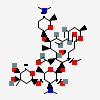



Spiramycin C43h74n2o14 Pubchem
Spiramycin II (CHEBI) has role antibacterial drug (CHEBI) spiramycin II (CHEBI) has role antimicrobial agent (CHEBI) spiramycin II (CHEBI) has role bacterial metabolite (CHEBI) spiramycin II (CHEBI) is a acetate ester (CHEBI) spiramycin II (CHEBI) is a aldehyde (CHEBI) spiramycin II (CHEBI) is a62 nonH bond(s), 4 multiple bond(s), 10 rotatable bond(s), 4 double bond(s), 3 sixmembered ring(s), 1 ester(s) (aliphatic), 1 aldehyde(s) (aliphatic), 1 tertiary amine(s) (aliphatic), 6 hydroxyl group(s), 4 secondary alcohol(s), 2 tertiary alcohol(s) and 7 ether(s) (aliphatic) Learn more about Spiramycin U chemical structure at MolInstinctsSpiramycin First draft prepared by Dr B L Marshall New Zealand Embassy Washington DC, USA ADDENDUM to the Spiramycin residue monograph prepared by the 43rd meeting of the Committee and published in FAO Food and Nutrition Paper 41/7, Rome 1995



Spiramycin I 50 5
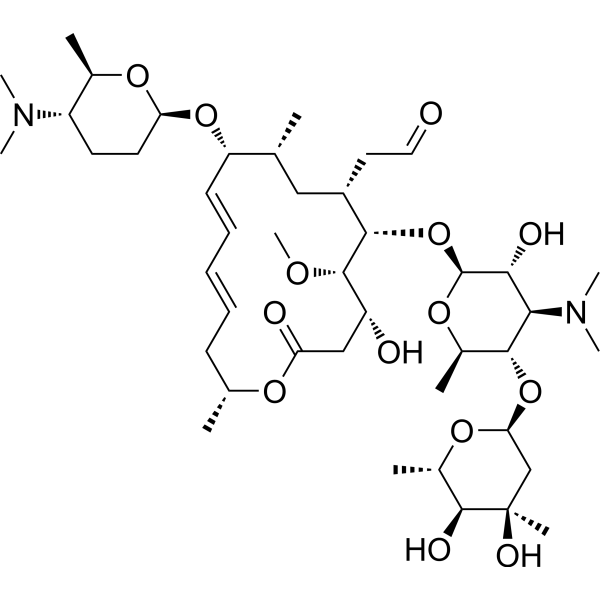



Spiramycin Rovamycin Antibiotic Medchemexpress
Crystal structures of the Haloarcula marismortui large ribosomal subunit complexed with the 16membered macrolide antibiotics carbomycin A, spiramycin, and tylosin and a 15membered macrolide, azithromycin, show that they bind in the polypeptide exit tunnel adjacent to the peptidyl transferase center Their location suggests that they inhibit protein synthesis by最新 spiramycine structure Spiramycin structure Spirilla (singular, Spirillum) are a group of bacteria characterized by a corkscrew (spiral) appearance They are Gramnegative bacteria and are characterized by motile structures known as flagella With the exception of one species,Spiramycin USANINNBAN Similar structures search, synonyms, formulas, resource links, and other chemical information
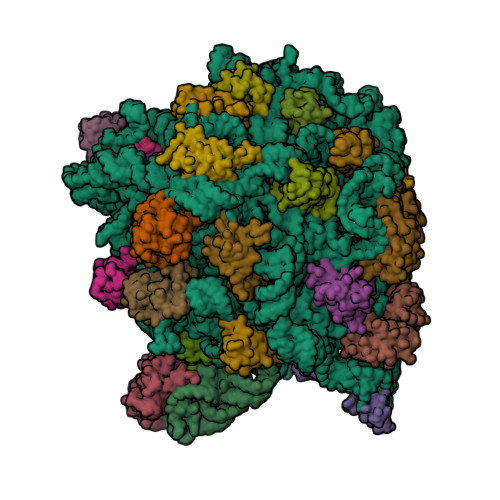



Rcsb Pdb 1kd1 Co Crystal Structure Of Spiramycin Bound To The 50s Ribosomal Subunit Of Haloarcula Marismortui
/D218B7AA3AA73D1B802585F8006742F1/$file/AS16859_structure.png)



Spiramycin I 50 5 Biosynth Carbosynth
Crystal structures of the Haloarcula marismortui large ribosomal subunit complexed with the 16membered macrolide antibiotics carbomycin A, spiramycin, and tylosin and a 15membered macrolide, azithromycin, show that they bind in the polypeptide exit tunnel adjacent to the peptidyl transferase centerSpiramycin I contains total 136 bond(s);Structure, properties, spectra, suppliers and links for spiramycin II,




Spiramycin Pharmaceutical Secondary Standard Milliporesigma Supelco 500 Fisher Scientific



Q Tbn And9gcskpbplqnejpoqrywrytlz1pj8 403csl Jggjyfs8ooau0s5yw Usqp Cau
ChEBI Name spiramycin I ChEBI ID CHEBI Definition A macrolide antibiotic produced by various Streptomyces species that is used to treat toxoplasmosis and various other infections of soft tissues StarsSpiramycin Article in French Lamy L, Landry RG, Roy S Chemotherapeutic agents appear to offer a great potential in the treatment of periodontal disease in conjunction with root planning and/or surgical approach One of these chemotherapeutic agents is spiramycinHSZLKTCKAYXVBXDCAGQSADSAN Spiramycin III Similar structures search, synonyms, formulas, resource links, and other chemical information



Spiramycin I C43h74n2o14 Chemspider



Spiramycin New Drug Approvals
62 nonH bond(s), 4 multiple bond(s), 11 rotatable bond(s), 4 double bond(s), 3 sixmembered ring(s), 1 ester(s) (aliphatic), 1 aldehyde(s) (aliphatic), 2 tertiary amine(s) (aliphatic), 4 hydroxyl group(s), 3 secondary alcohol(s), 1 tertiary alcohol(s) and 7 ether(s) (aliphatic) Learn more about Spiramycin I chemical structure at MolInstinctsSpiramycin II C45H76N2O15 CID structure, chemical names, physical and chemical properties, classification, patents, literature, biological activitiesWere identified and their structure confirmed by mass spectrometry Residues of parent drug accounted for 04 mg/kg, while residues of spiramycin adducts with Lcysteine represented 105 mg/kg, and neospiramycin adducts with Lcysteine accounted for




Spiramycin Ii



Spiramycin Formacidine Cas 8025 81 8 Abmole Bioscience Spiramycin Price
Tetrahydrofuranyl and tetrahydropyranyl derivatives of neospiramycin I at 3 and/or 4' position were synthesized In vitro and in vivo activities of these derivatives were correlated with the position and configuration of acetal groups The most effective derivative, 3a, 4'adiOtetrahydrofuranylnFind SigmaAldrichS9132 MSDS, related peerreviewed papers, technical documents, similar products & more at SigmaAldrichChemsrc provides Spiramycin(CAS#) MSDS, density, melting point, boiling point, structure, formula, molecular weight etc Articles of Spiramycin are included as well




Neo Spiramycin I Cas 62 2 Glentham Life Sciences




Kegg Drug Spiramycin
COA of Spiramycin contains the actual results obtained from testing performed as part of quality control View our Spiramycin specific physical and chemical properties, and analytical dataSpiramycin,physical properties,suppliers,CAS,MSDS,structure,Molecular Formula, Molecular Weight ,Solubility,boiling point, melting pointStructure, properties, spectra, suppliers and links for spiramycin III




Spiramycin Embonate Cas 08 7 Embonate Antibiotic Medkoo




Spiramycin Wikipedia
Spiramycin U contains total 133 bond(s);Acetylspiramycin C45H76N2O15 CID structure, chemical names, physical and chemical properties, classification, patents, literature, biologicalSpiramycin is a macrolide antibiotic and antiparasitic It is used to treat toxoplasmosis and various other infections of soft tissues Although used in Europe, Canada and Mexico, 1 spiramycin is still considered an experimental drug in the United States, but can sometimes be obtained by special permission from the FDA for toxoplasmosis in the first trimester of pregnancy 2



Spiramycin スピラマイシン Drug Approvals International
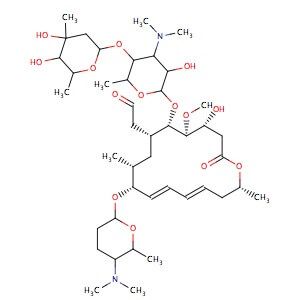



Spiramycin I Cas 50 5 Scbt Santa Cruz Biotechnology
Spiramycin also induces a decrease in tritiated uridine (3HUdR) uptake, which suggests that Spiramycin interferes with an early event in the cell cycle 4 Spiramycin and, to a lesser extent, erythromycin increases total IL6 production without affecting IL1 alpha, IL1 beta, or tumor necrosis factor alpha production in human monocytes stimulated with lipopolysaccharideSummarySince the introduction of spiramycin, thousands of patients have been treated with the drug and few have developed severe adverse reactions Gastrointestinal disorders were usually mild and transient, and allergic reactions were quite uncommon Liver injury was described only once and drug interactions have not been reported The safety profile of this 16membered lactone4019 mass spectra in 6 spectral trees are available online for the compound Spiramycin Last modification occurred on PM mzCloud ‒ Free
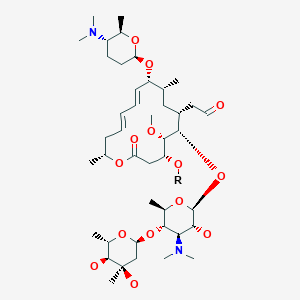



Spiramycin スピラマイシン New Drug Approvals
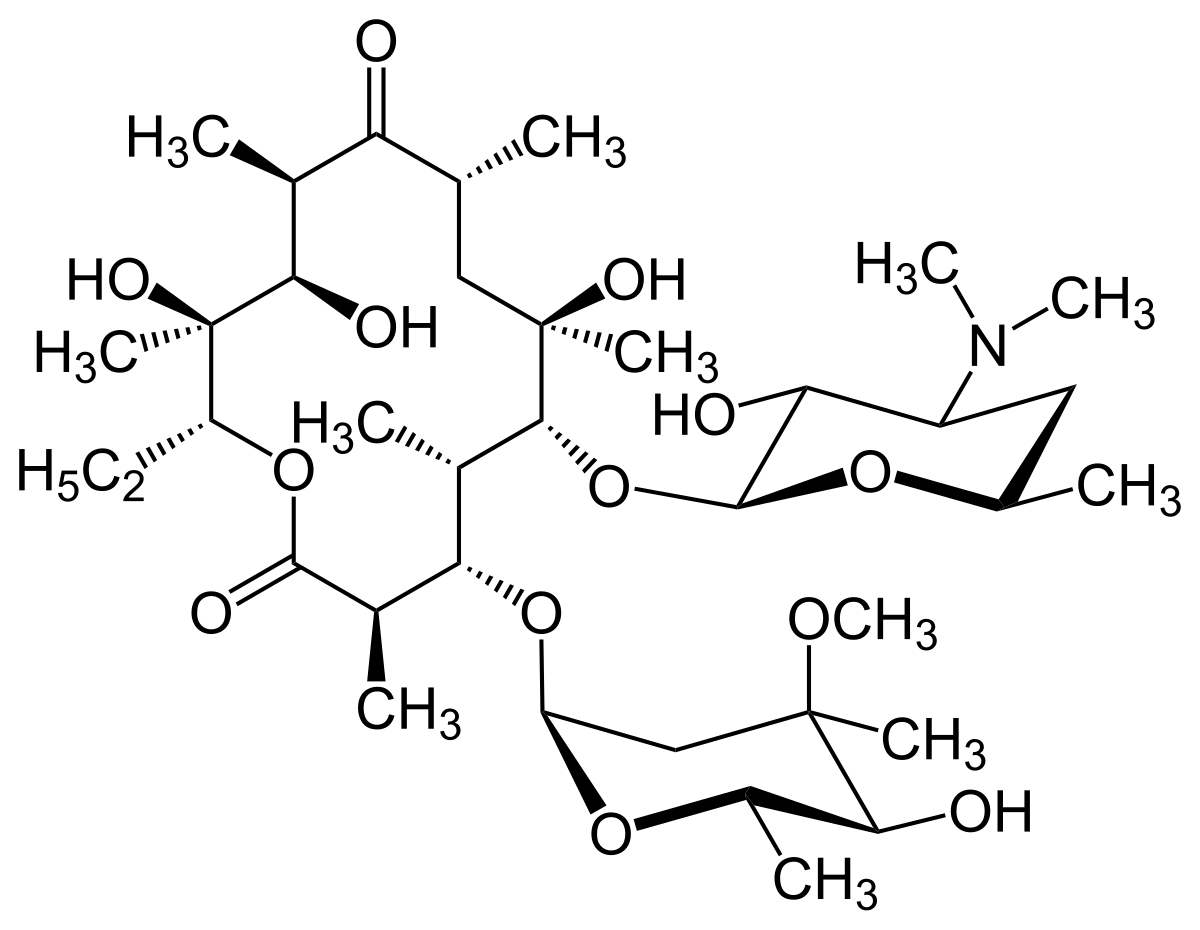



Macrolide Wikipedia
Structure, properties, spectra, suppliers and links for Spiramycin I,Structure activity relationships of spiramycins are discussed Introduction Spiramycin (PinnertSindico et al, 1955) is a complex of 16membered macrolide antibiotics active against Grampositive bacteria, mycoplasmas and toxoplasmas Its acetyl derivative in addition to spiramycin is used clinically Spiramycin contains threeStructure, properties, spectra, suppliers and links for Spiramycin I



Q Tbn And9gcr9ohc8k8xdklq3 Vpmbg8 G8izttazf3lfsyvoxor 7xtdmk Usqp Cau




A Chemical Structure Of Spiramycin Pk 7 9 B Dose Dependent Download Scientific Diagram
Using a structure estimation method based on molecular connectivity indices(1), the Koc of spiramycin can be estimated to be 140(SRC) According to a classification scheme(2), this estimated Koc value suggests that spiramycin is expected to have high mobility in soil Spiramycin is a 16memberedring macrolide with an antibacterial spectrum characteristic of this class of drugs and including Gramnegative and Grampositive cocci, Bryskier A Structure and activity In Neu et al (Eds) The new macrolides, azalides and streptogramins, pp 3–11, Marcel Dekker, New York, 1993Spiramycin, a macrolide, is used to reduce transmission of infection from an acutely infected mother to her fetus in utero 43 It is concentrated in the placenta and is reported to decrease transmission by 50% 43 It reduces the ability to isolate the organism from the placentas of definitively infected newborn infants from 95% to 80% 175 Spiramycin is substantially less




Chemical Structures Of Main Components Of Spiramycin And Its Related Download Scientific Diagram




Acetyl Spiramycin Spiramycin Adipate Spiramycin Base Manufacturers And Suppliers Price Fengchen




Molecular Structure Of A Clarithromycin And B Spiramycin 8 Download Scientific Diagram




Efficient And Simple Hplc Method For Spiramycin Determination In Urine Samples And In Pharmaceutical Tablets Mahmoudi 18 Separation Science Plus Wiley Online Library
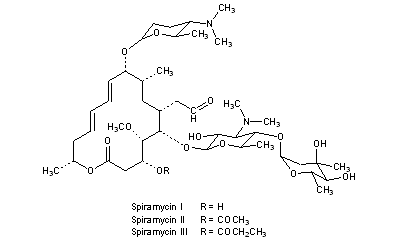



Spiramycin




Acetyl Spiramycin Biochemical Mybiosource




Rcsb Pdb 5igz Macrolide 2 Phosphotransferase Type Ii Complex With Gdp And Spiramycin



2




Acetyl Spiramycin Biochemical Mybiosource




Applied Sciences Free Full Text Physicochemical Properties And In Vitro Dissolution Of Spiramycin Microparticles Using The Homogenate Antisolvent Precipitation Process Html




Spiramycin Adipate Cas 680 55 7 Glentham Life Sciences




Regulation Of The Biosynthesis Of The Macrolide Antibiotic Spiramycin In Streptomyces Ambofaciens Journal Of Bacteriology
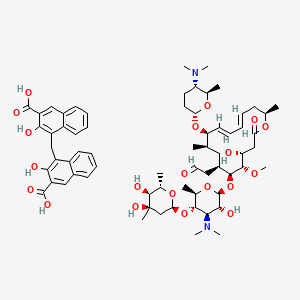



Spiramycin Embonate C66h90n2o Pubchem




A Chemical Structure Of Spiramycin Pk 7 9 B Dose Dependent Download Scientific Diagram




Epa1 Levoisovalerylspiramycin Iii And Preparations Preparation Methods And Uses Thereof Google Patents
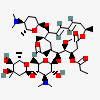



Spiramycin Iii C46h78n2o15 Pubchem




Spiramycin Rovamycine Macrolide Antibiotic Cas 8025 81 8 Ab Abcam




Rcsb Pdb 1kd1 Co Crystal Structure Of Spiramycin Bound To The 50s Ribosomal Subunit Of Haloarcula Marismortui
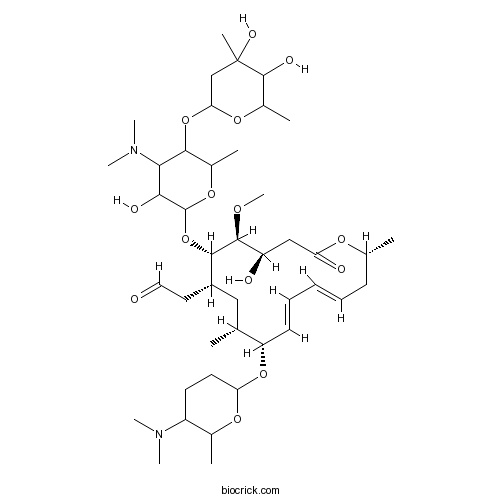



Spiramycin Cas 8025 81 8 High Purity Manufacturer Biocrick




Neo Spiramycin I Biochemical




Spiramycin Iii Cas 52 7 Iii Antibiotic Medkoo



Spiramycin Iii 52 7




Spiramycin Hexanedioate Biorbyt
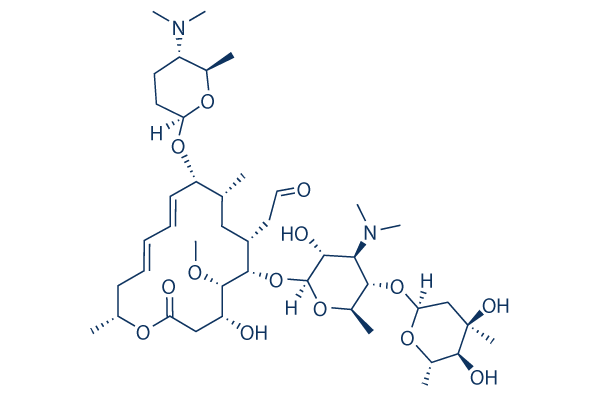



Spiramycin I 99 Hplc Selleck Antibiotics Chemical
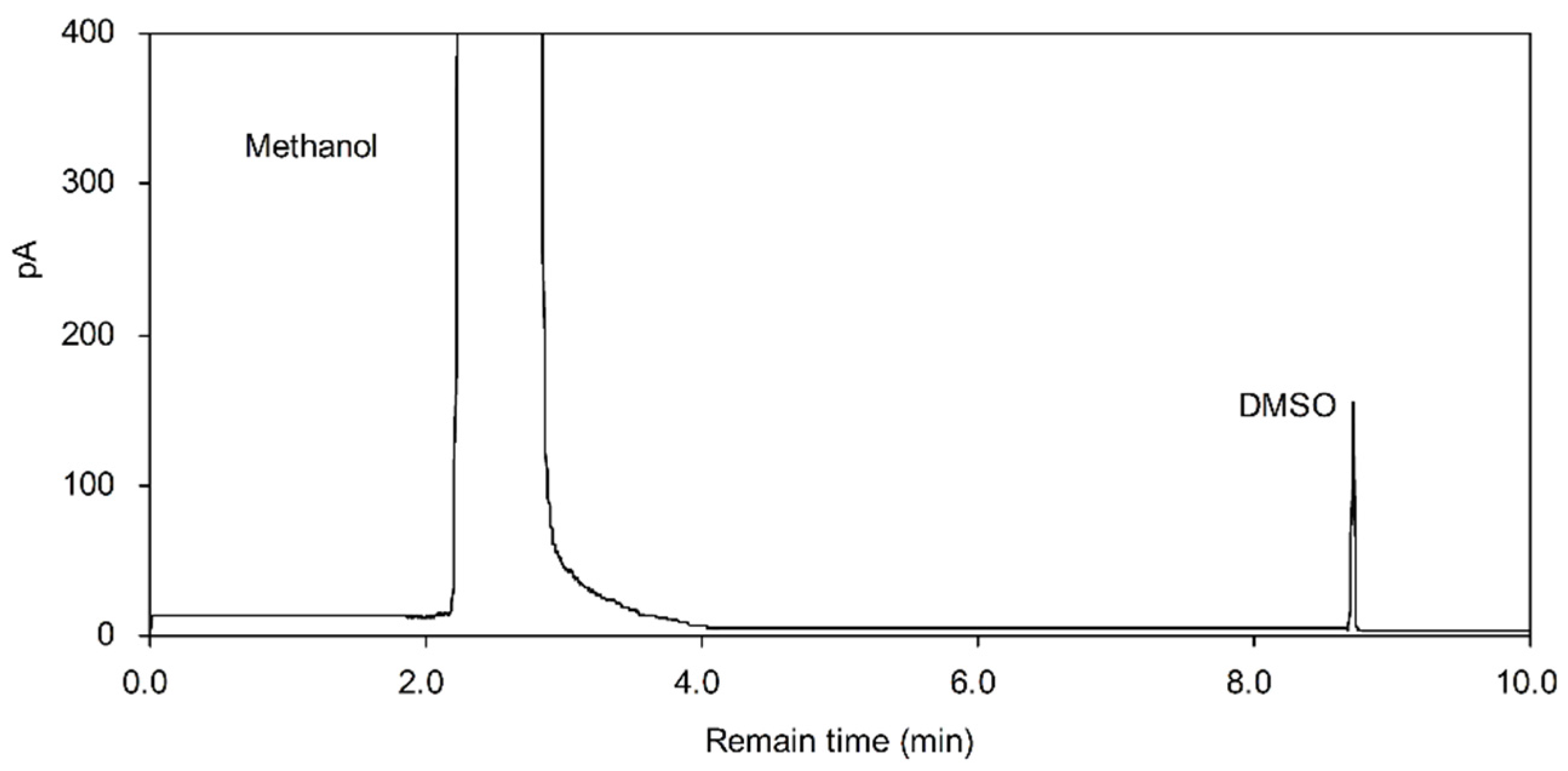



Applied Sciences Free Full Text Physicochemical Properties And In Vitro Dissolution Of Spiramycin Microparticles Using The Homogenate Antisolvent Precipitation Process Html
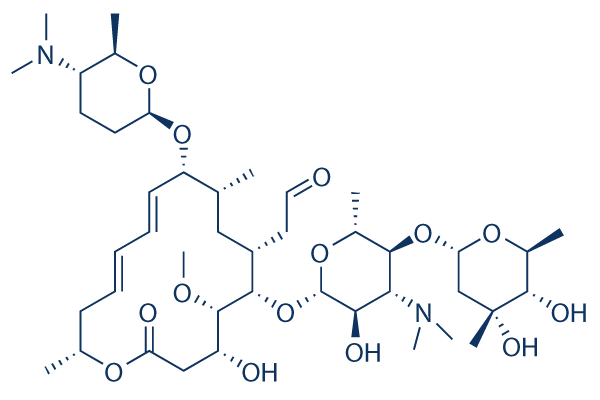



Spiramycin 99 Hplc Selleck Antibiotics Chemical
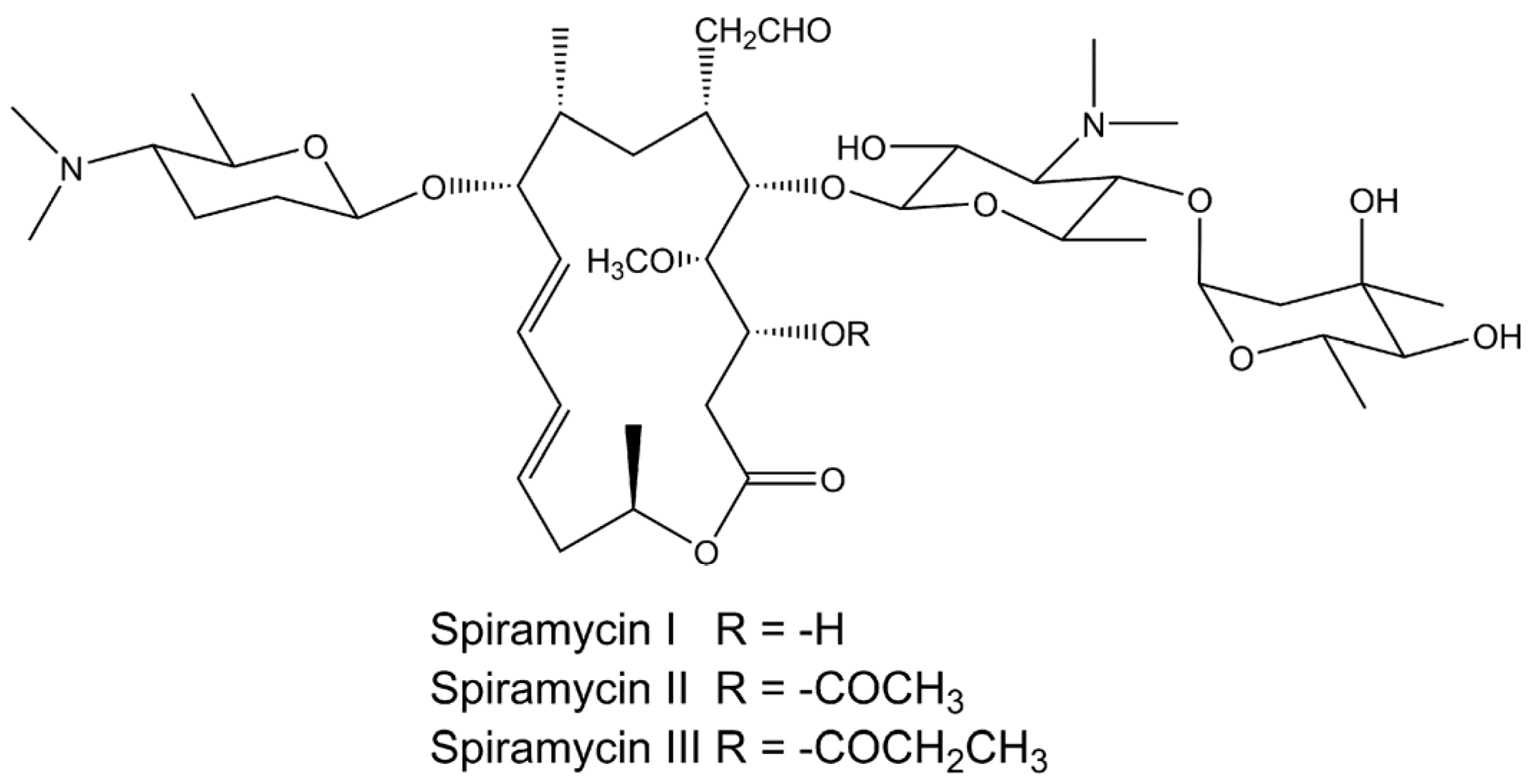



Applied Sciences Free Full Text Physicochemical Properties And In Vitro Dissolution Of Spiramycin Microparticles Using The Homogenate Antisolvent Precipitation Process Html




Chemical Structures Of Main Components Of Spiramycin And Its Related Download Scientific Diagram
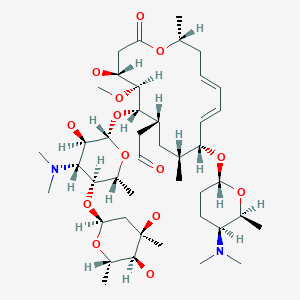



Spiramycin New Drug Approvals




Tylosin An Overview Sciencedirect Topics




Figure 3 Application Of Different Analytical Techniques And Microbiological Assays For The Analysis Of Macrolide Antibiotics From Pharmaceutical Dosage Forms And Biological Matrices




Spiramycin Spiramycin Oral Uses Dosage Side Effects
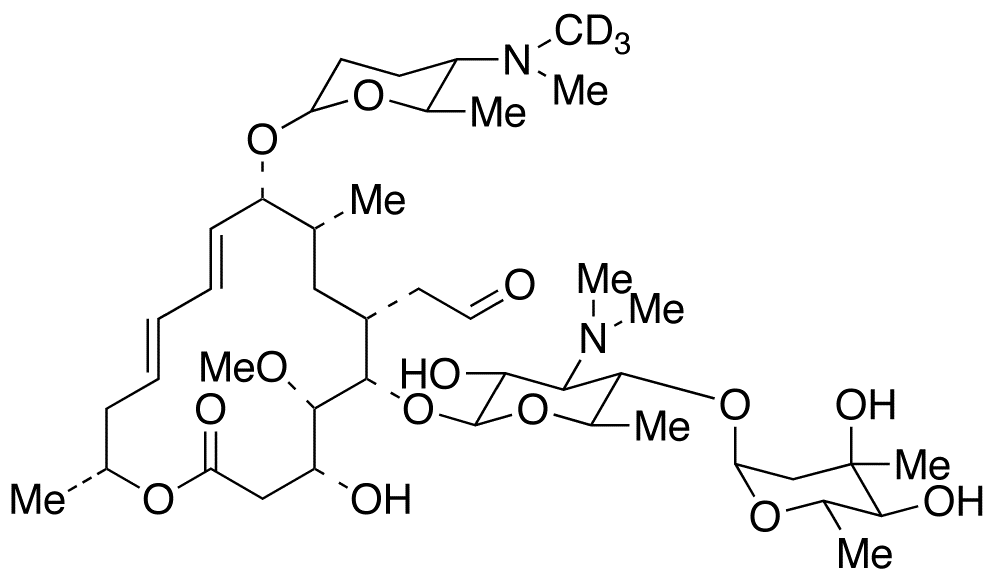



Spiramycin I D3 9 O 2r 5s 6r 5 Dimethylamino Tetrahydro 6 Methyl 2h Pyran 2 Yl Leucomycin V D3 Foromacidin A D3 Spiramycin A D3 C H D N O Trc




Dr7juz6yz4q2dm
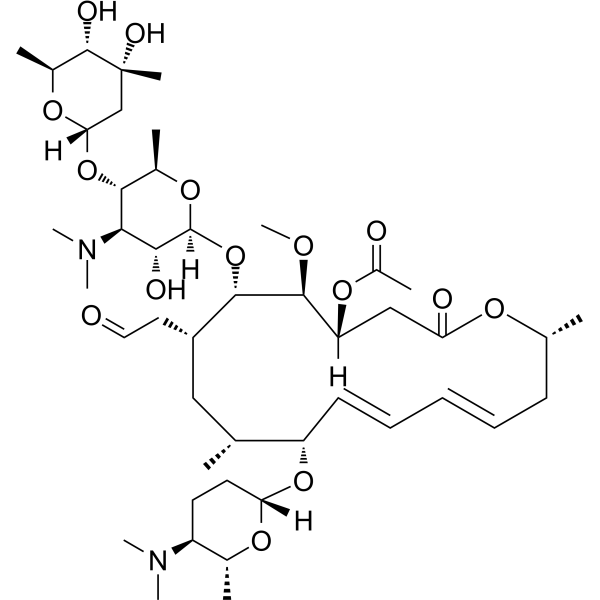



Acetylspiramycin Spiramycin B Macrolide Antibiotic Medchemexpress
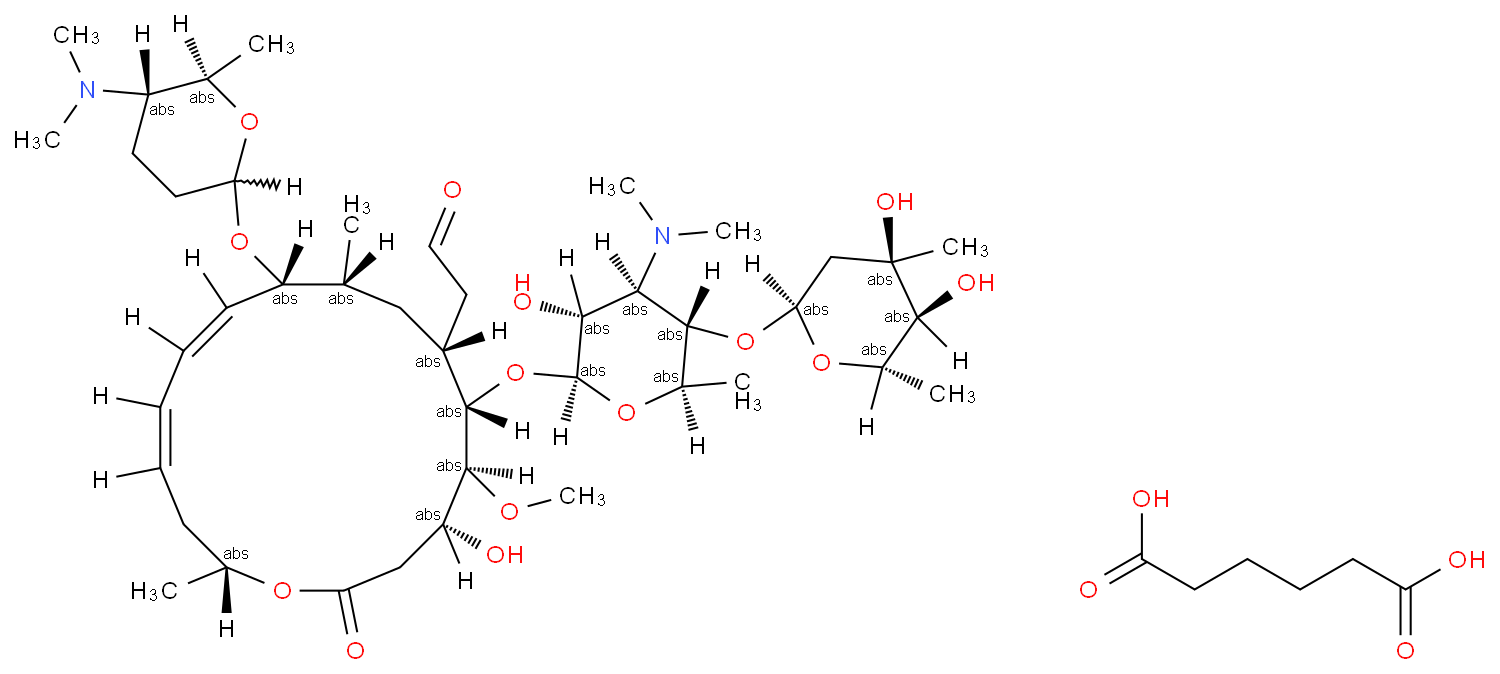



Spiramycin Adipate 680 55 7 Wiki
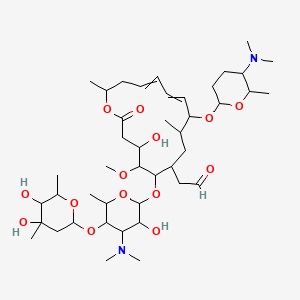



Spiramycin Undefined Stereochemistry C43h74n2o14 Pubchem



Q Tbn And9gcth3d8x1nireuodgfhyz04qsitlwdy5u24hqn3wfh7gfdgiknay Usqp Cau




Spiramycin Structure C43h74n2o14 Over 100 Million Chemical Compounds Mol Instincts




Chemical Structures Of Main Components Of Spiramycin And Its Related Download Scientific Diagram



Spiramycin New Drug Approvals
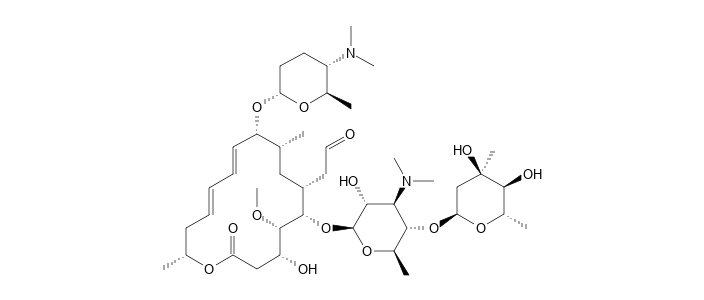



Spiramycin Raman Spectrum Spectrabase




A Primary Structures Of 4 Acetyl Spiramycin And Download Scientific Diagram
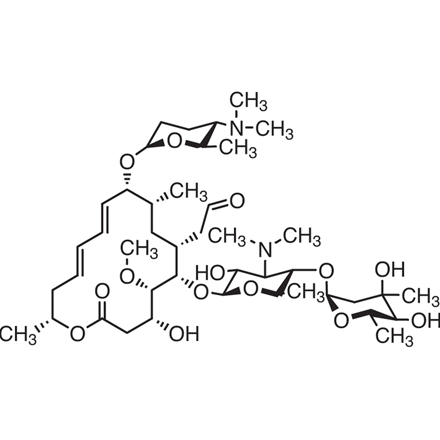



Spiramycin 8025 81 8 Tci Chemicals India Pvt Ltd
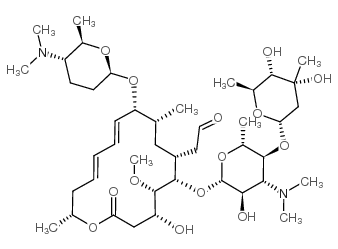



Spiramycin I Cas 50 5 Chemsrc



160
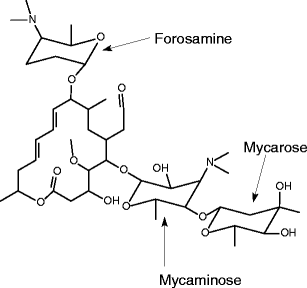



Fate Of Antibacterial Spiramycin In River Waters Springerlink




Spiramycin Ii




Rapid Thermal Acid Hydrolysis Of Spiramycin By Silicotungstic Acid Under Microwave Irradiation Sciencedirect




Antibacterial Inactivation Of Spiramycin After Titanium Dioxide Photocatalytic Treatment Sciencedirect




Structure Activity Relationships Of Ketolides Vs Macrolides Clinical Microbiology And Infection




Spiramycin 8025 81 8
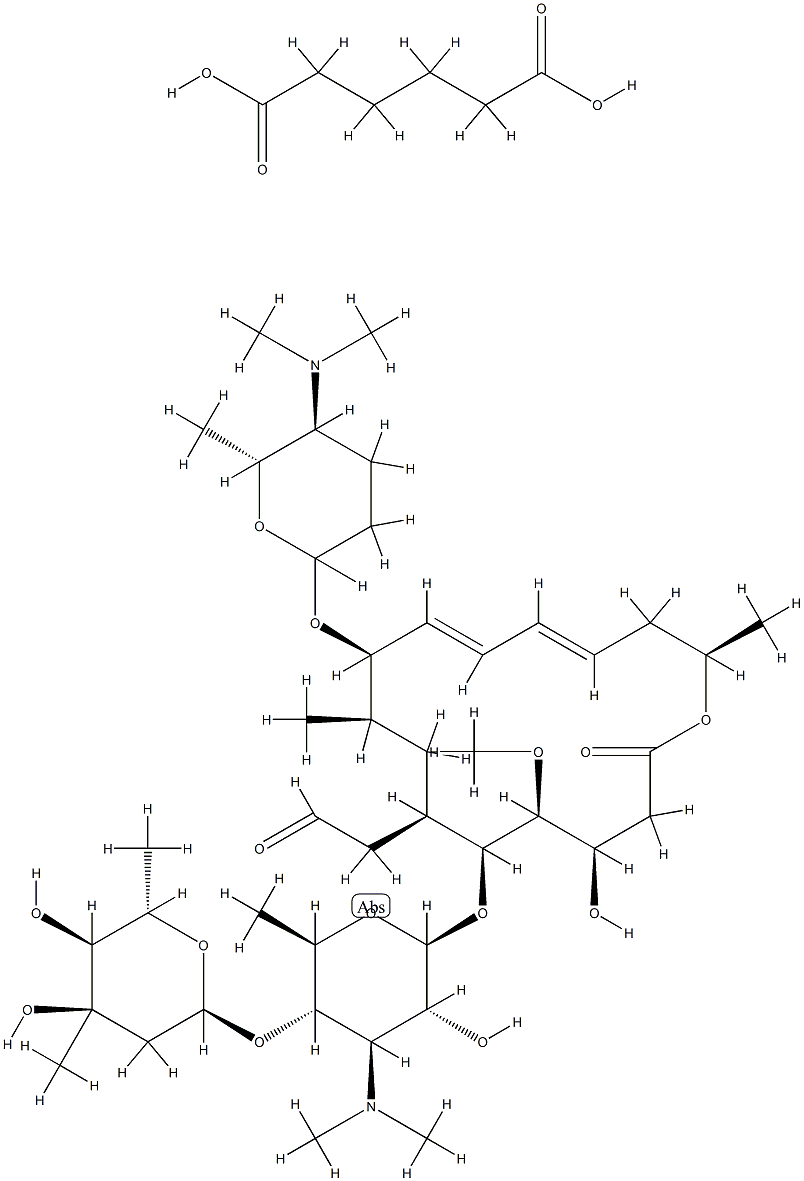



680 55 7 Cas Msds Spiramycin Adipate Melting Point Boiling Point Density Cas Chemical Properties
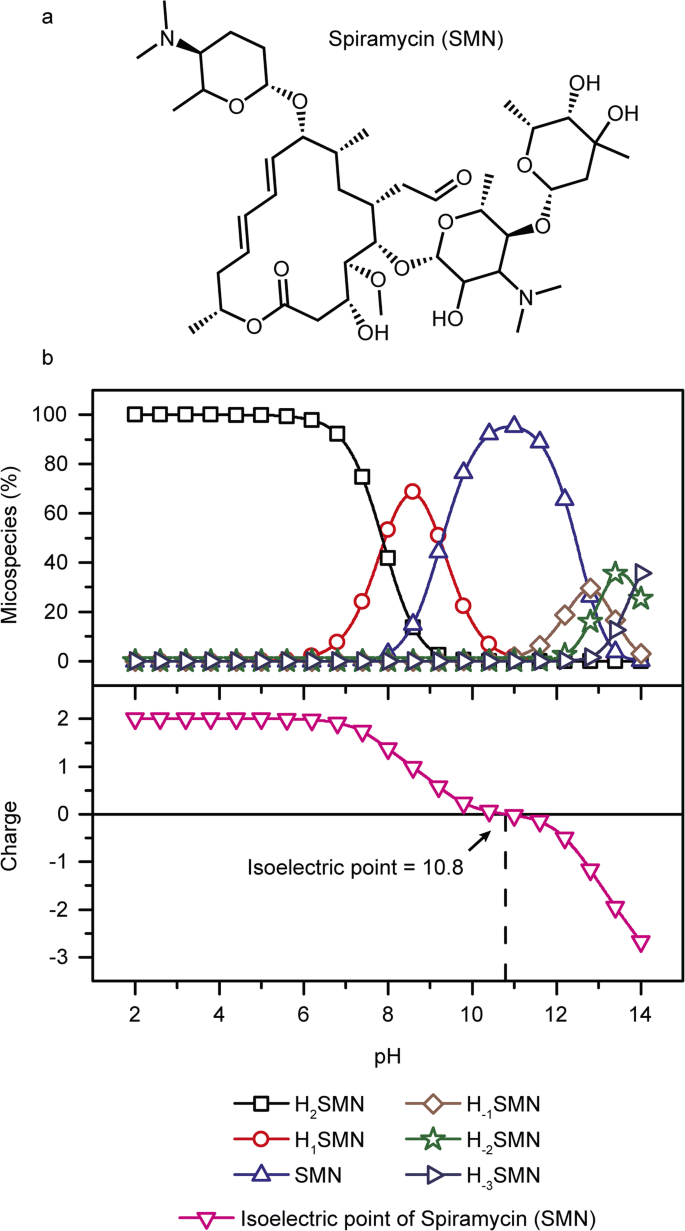



Spiramycin Adsorption Behavior On Activated Bentonite Activated Carbon And Natural Phosphate In Aqueous Solution Springerlink
/4ECE7900D4445432802585F90081B95E/$file/FS44433_structure.png)



Spiramycin Adipate 680 55 7 Biosynth Carbosynth
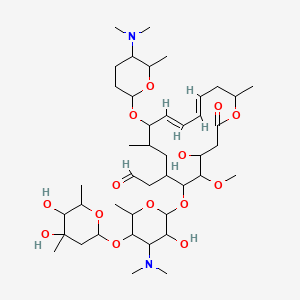



Spiramycin スピラマイシン New Drug Approvals
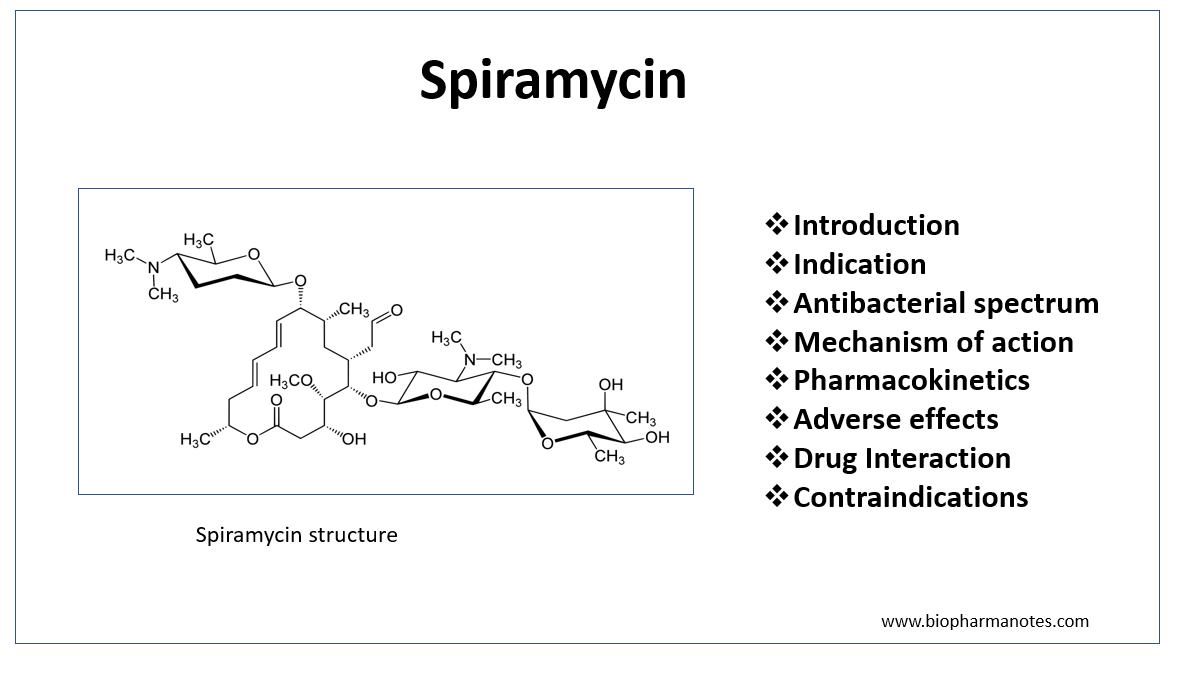



Pharmacology Of Spiromycin Biopharma Notes




Spiramycin Adipate Cas 680 55 7 Chemsrc
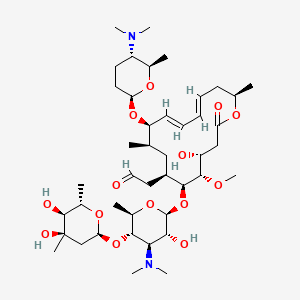



Spiramycin C43h74n2o14 Pubchem
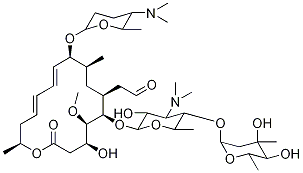



Spiramycin I D3




Simultaneous Multiresidue Determination Of Metronidazole And Spiramycin In Fish Muscle Using High Performance Liquid Chromatography With Uv Detection Sciencedirect




Chemical Structures Of Main Components Of Spiramycin And Its Related Download Scientific Diagram
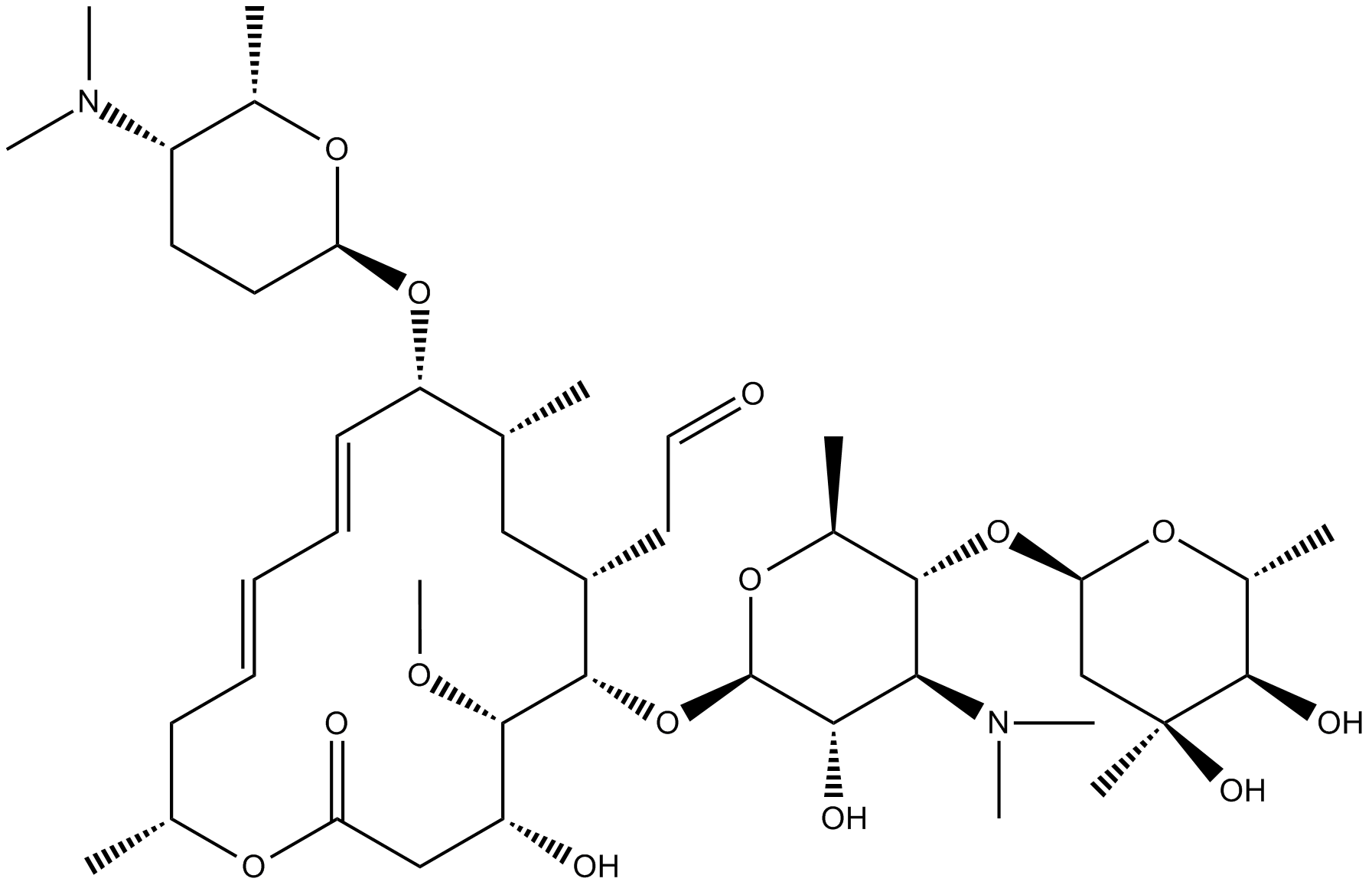



Apexbio Spiramycin



Spiramycin 8025 81 8




Chemical Structure Of Obtained Spiramycin Derivatives Download Scientific Diagram




08 7 Spiramycin Embonate Antibiotic 799 Espiramicin Foromacidin Il 5902 Nsc Provamycin Rp 5337 Rovamicina Rovamycin Rovamycine Selectomycin Sequamycin Spiramycins Stomamycin C H N O Trc
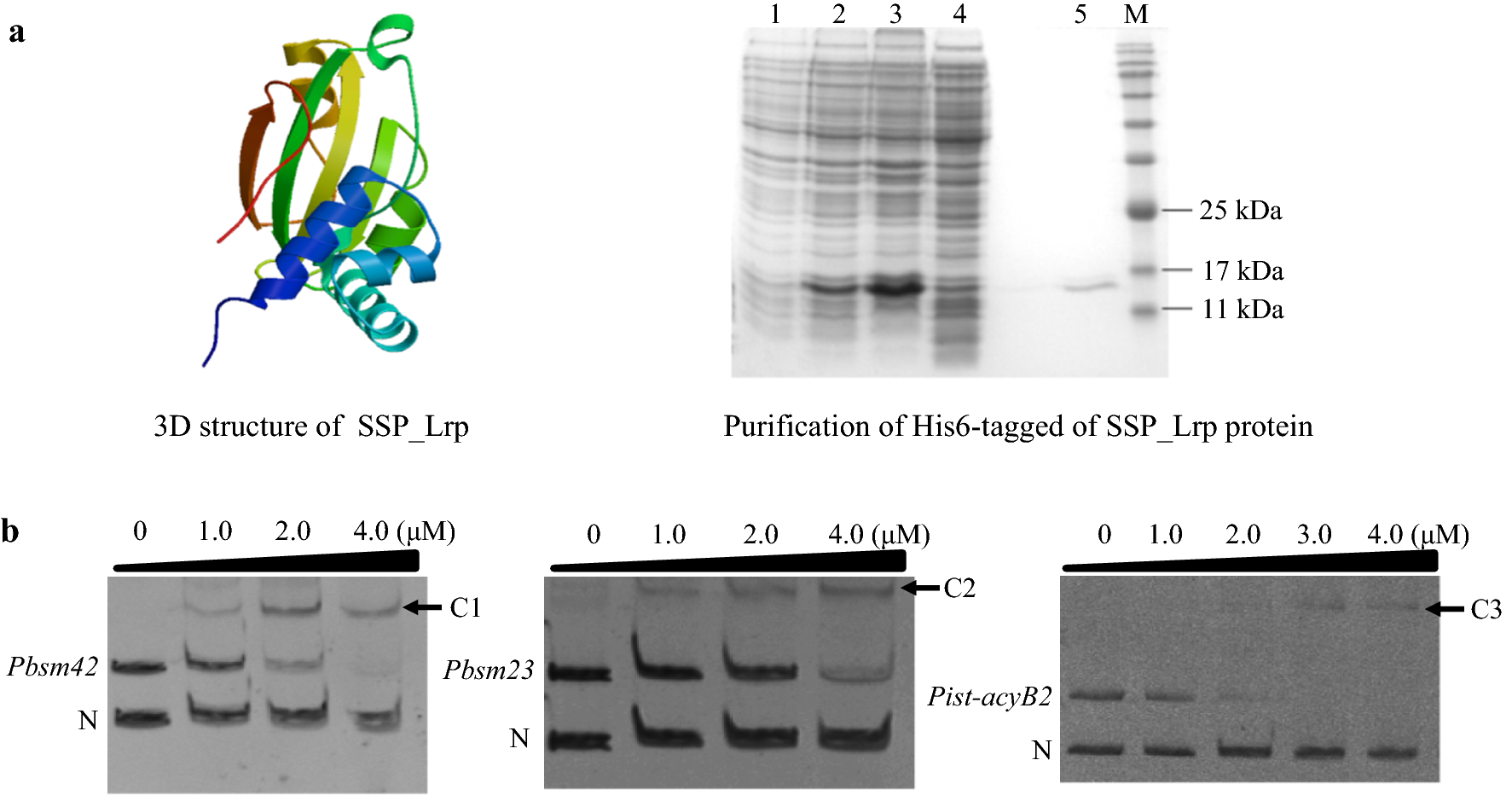



Engineering Of Leucine Responsive Regulatory Protein Improves Spiramycin And Bitespiramycin Biosynthesis Microbial Cell Factories Full Text




Spiramycin I D3 C43h74n2o14 Pubchem




Chemical Structure Of Spiramycin With Labels Download Scientific Diagram




Spiramycin Adipate C49h84n2o18 Pubchem
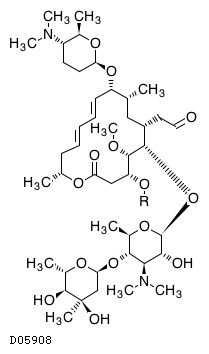



Kegg Drug Spiramycin




Structures Of Spiramycins Neospiramycins Spiramycins U And S And Download Scientific Diagram




Acetyl Spiramycin Spiramycin Adipate Spiramycin Base Manufacturers And Suppliers Price Fengchen




Engineering Of Leucine Responsive Regulatory Protein Improves Spiramycin And Bitespiramycin Biosynthesis Microbial Cell Factories Full Text




Spiramycin Structure C43h74n2o14 Over 100 Million Chemical Compounds Mol Instincts



Chemidplus 8025 81 8 Spiramycin Usan Inn Ban Similar Structures Search Synonyms Formulas Resource Links And Other Chemical Information
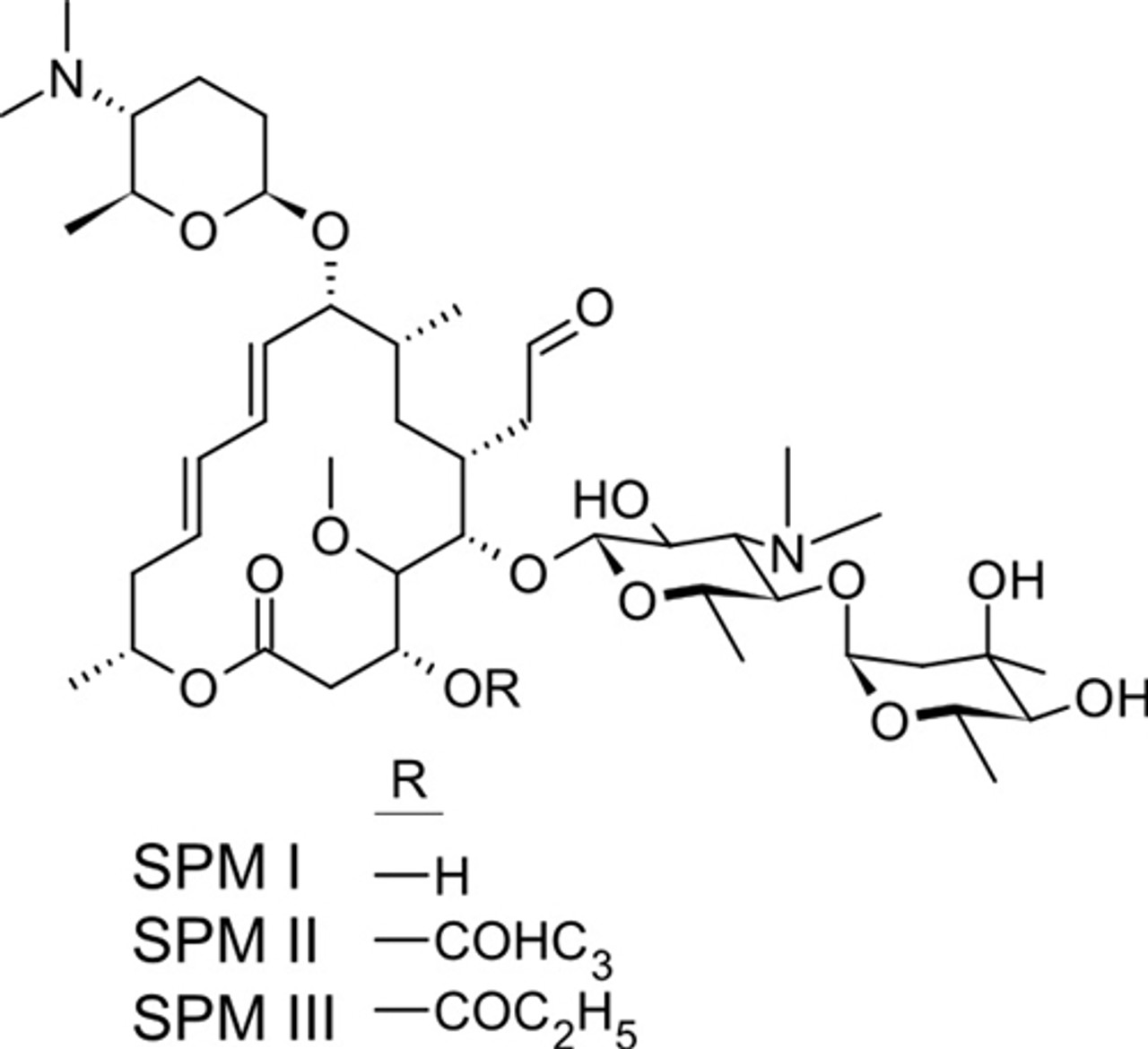



Spiramycin Toku E




Polyamines Affect Diversely The Antibiotic Potency Journal Of Biological Chemistry




The Structures Of Four Macrolide Antibiotics Bound To The Large Ribosomal Subunit Molecular Cell



Spiramycin Millipore Bioz Ratings For Life Science Research




Spiramycin Impurity B 4r 5s 6s 7r 9r 10r 11e 13e 16r 6 2s 3r 4r 5s 6r 5 2s 4r 5s 6s 4 5 Dihydroxy 4 6 Dimethyltetrahydro 2h Pyran 2 Yl Oxy 4 Dimethylamino 3 Hydroxy 6 Methyltetrahydro 2h Pyran 2 Yl Oxy 10 2r 5s 6r 5 Dimethylamino
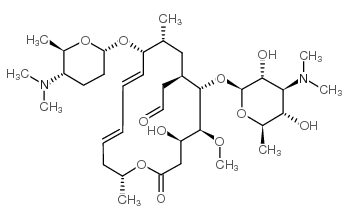



Neo Spiramycin I Cas 62 2 Chemsrc



0 件のコメント:
コメントを投稿